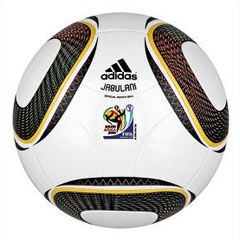Where have all the goals gone?

Rustenburg - Some day soon this World Cup is going to start, but after the first round of fixtures there is a sense that it is still very much in the stage of phony war.
The most obvious sign of the tentativeness of much of the play is the number of goals.
Football is never going to go back to the days of the 1950s and four goals a game, but 25 goals in the first 16 matches - 1.56 goals per game - compares badly with everything that has gone before.
The lowest scoring World Cup in history was Italia 90, which yielded just 2.31.
So sterile was that tournament seen to be that it prompted the abolition of the backpass, a liberalisation of the offside law and a crack-down on the tackle from behind.
To be strictly fair, like should be compared with like, and this tournament falls down badly when measured against the three previous 32-team competitions.
The first round of games in 1998 produced 37 goals, in 2002 46 and in 2006 39; the 25 in this tournament, then, is 50 percent worse than anything that has gone before.
The question then is why. Many have blamed the ball. Many anticipated it would be difficult for goalkeepers, but outfielders seem to find it difficult to control.
Figures are hard to come by, but several players have complained about its tendency to fly without dip, and observational evidence suggests a lot of shots blasted over and a lot of overhit crosses.
Nobody yet has scored with a clean shot from outside the box without serious goalkeeper error.
It's easy to be cynical and suggest the ball provides an easy excuse, or that players contracted to Nike or Puma have an ulterior motive in attacking a ball manufactured by Adidas, but when even Lionel Messi, an Adidas poster-boy, complains it is difficult to curl, it's worth taking notice.
Opta statistics show only 33.44 percent of shots have been on target in this tournament - down around 10 per cent on the Premier League and Champions League last season and the World Cup in 2006.
Then again, that may be the fault of the altitude - thinner air means fewer molecules to generate friction, and thus spin is diminished - which may also explain the tendency for crosses and shots to be overhit.
The one outstanding performance so far came from Germany in their 4-0 win over Australia; perhaps significantly that game was played in Durban, at sea-level.
When the African Cup of Nations in Mali in 2002 produced 1.5 goals per game, it was blamed on the poor quality of the pitches; that is clearly not the issue here.
Some have suggested that the lack of minnows this time around means there are no hammerings being meted out, which keeps the goal average down.
The point is valid if comparison is being made to, say, 1954, when South Korea were beaten 9-0 by Hungary and 7-0 by Turkey, but the truth is that real mismatches are extremely rare in recent World Cups.
In the first round of fixtures in those last three tournaments, only four games yielded a winning margin of three goals or more - France beat South Africa 3-0 in 1998, Germany beat Saudi Arabia 8-0 in 2002, and 2006 saw Spain beat Ukraine 4-0 and the Czech Republic beat the United States 3-0.
Perhaps, then, the issue is tactical. The first winter World Cup for 32 years means cooler weather, which makes it easier for teams to maintain the constant running necessary to maintain a hard pressing game.
Then again, plenty of European leagues and the Champions League are played in cool weather and feature perfectly attacking football.
Others have suggested the move towards one-centre-forward systems - 4-3-3 or 4-2-3-1 - is essentially negative, and leads to dull midfield battles.
Formations, though, are neutral; what is more important is the mindset. When a 4-2-3-1 allows a coach to field such attacking talent as Angel Di Maria, Carlos Tevez, Gonzalo Higuain and Messi - as Argentina do - it is hard to argue the system is negative.
Equally, England expect to be liberated by the return of Gareth Barry, a holding midfielder.
With the security he provides, Steven Gerrard and Frank Lampard can focus more on attacking. Exciting football is not simply about the number of forwards on the pitch.
What additional midfielders do allow, though, is for teams in the lead to maintain possession, perhaps holding a 1-0 rather than seeking additional goals (a 2005 paper by the economists Luis Garicano and Ignacio Palacios-Huerta indicated the move to three points for a win post-1990 encouraged teams to try to hold leads as the penalty for conceding an equalizer was two points rather than one).
So there may be a tactical issue, but the real issue seems to be the difficulty, whether through its design or the altitude, in controlling the ball.???
Copyright News24.com. Reprinting is not allowed without express, written permission.
 0
0 






